EV news
Tata Motors Ventures into Resale Market for Electric Vehicles
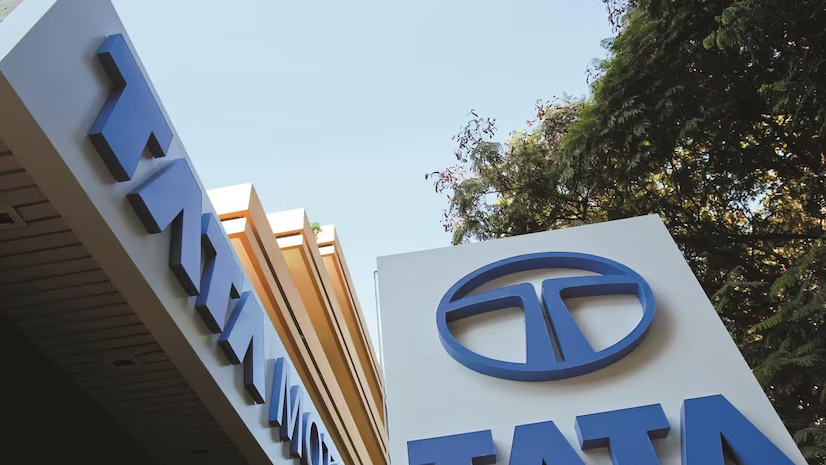
Tata Motors, a leader in India’s electric vehicle (EV) sector, is taking significant steps to enhance the resale and exchange market for its electric cars. By collaborating with used car marketplaces, Tata Motors aims to address the growing need for a robust EV resale system. This move not only benefits current EV owners but also potentially attracts new buyers looking to switch to electric vehicles.
Tata Motors’ Resale Initiative
As the largest electric car manufacturer in India, Tata Motors is leveraging its substantial EV inventory to test new resale strategies. The company has embarked on a pilot project in partnership with Spinny, a well-known online marketplace for used cars. This collaboration is part of Tata Motors’ broader plan to facilitate the resale and exchange of electric vehicles, making it easier for existing owners to upgrade to newer models.
Extensive EV Inventory
Tata Motors boasts an impressive fleet of electric vehicles, estimated at around 170,000 units across India. This extensive inventory positions the company uniquely to influence the used car market significantly. By integrating this large pool of EVs into the resale and exchange framework, Tata Motors aims to streamline the process and provide a structured pathway for EV owners seeking new models.
Projected Trends in the Used EV Market
The trajectory of the used EV market is expected to align with the new EV market, albeit with a delay of approximately 3-4 years. This delay is anticipated due to the nature of early adopters who are likely to upgrade to more advanced EV models. As these early adopters transition to newer vehicles, the used EV market will gradually catch up, reflecting the advancements and changes seen in the new EV market.
Pricing Dynamics and Depreciation
The depreciation of used EVs typically follows a pattern similar to that of internal combustion engine (ICE) vehicles. In the first year, used EV prices usually drop by about 25%. Subsequent depreciation rates depend on factors such as usage and battery condition. This trend underscores the importance of understanding the financial implications of purchasing a used EV, especially for prospective buyers considering their long-term investment.
Growing Demand for EV Exchanges
Tata Motors has noted a rising interest from customers looking to exchange their older EV models, such as the Tiago or Nexon EV, for newer versions. This trend highlights a shift in consumer behavior, with more individuals seeking to upgrade within the EV segment. The demand for exchanges reflects the increasing confidence in electric vehicles and the desire for the latest advancements in EV technology.
Benefits of Purchasing Used EVs
One of the significant advantages of buying used EVs is the warranty on their batteries, which typically lasts between 8 and 10 years. This extended warranty period offers substantial peace of mind to buyers, making used EVs a compelling option for those conscious of their budgets. The longevity of EV batteries, coupled with the low running costs, makes used EVs an attractive alternative for many consumers.
Tata Motors’ Pricing Strategy
To make electric vehicles more accessible, Tata Motors is working on reducing the price gap between EVs and ICE vehicles. This strategic move is aimed at making EVs more affordable and appealing to a broader range of buyers. By narrowing this price difference, Tata Motors hopes to accelerate the adoption of electric vehicles and further solidify its position as a leader in the EV market.
Challenges in EV Sales
Despite these efforts, Tata Motors has encountered challenges in EV sales for the fiscal year 2025. The company has experienced a significant drop in EV volumes, primarily due to the conclusion of the FAME II subsidy and a decline in fleet segment sales. These factors have impacted the overall performance of Tata Motors’ EV segment. However, the company remains optimistic about overcoming these hurdles and achieving growth in the coming quarters.
Bundled Offers for Enhanced Value
In response to the challenges in the EV market, Tata Motors has introduced bundled plans in partnership with Tata Power. These bundles include electric vehicles and solar rooftop installations, designed to offer zero running costs for buyers. This initiative aligns with Tata Motors’ goal of making EV ownership more cost-effective and sustainable, further enhancing the value proposition for consumers.
Industry Trends and Competitive Landscape
The electric vehicle market is experiencing a surge in interest from various automotive players. Competitors like Maruti Suzuki are focusing on creating comprehensive EV ecosystems to address key concerns such as range anxiety, charging infrastructure, and residual value. Maruti Suzuki plans to offer a complete package to EV customers, ensuring that they have all the necessary support and resources.
Additionally, premium car manufacturers like Mercedes Benz are setting new standards by offering guaranteed residual values for their EVs. For instance, the newly launched EQS SUV comes with a guaranteed 60% residual value after three years, providing a sense of security to buyers. This approach is likely to influence market trends and set benchmarks for other manufacturers.
Future Outlook for the EV Market
Looking ahead, the future of the electric vehicle market appears promising. The anticipated recovery in the EV sector is expected as the fleet segment improves and more individuals embrace solar energy solutions. Tata Motors’ strategic moves in the resale and exchange market are expected to play a crucial role in this recovery. By addressing the needs of current EV owners and potential buyers, Tata Motors aims to contribute to the growth and expansion of the electric vehicle market.
In conclusion, Tata Motors is making significant strides in the electric vehicle sector by enhancing the resale and exchange market for EVs. Through collaborations with used car marketplaces, extensive inventory management, and strategic pricing, the company is positioning itself as a key player in the evolving EV landscape. Despite facing challenges, Tata Motors remains committed to advancing electric vehicle adoption and providing value to its customers.
Article By
Prashant Sharma
Blog
MG’s Cyberster: India’s Upcoming Premium Electric SUV Set to Launch in July 2025
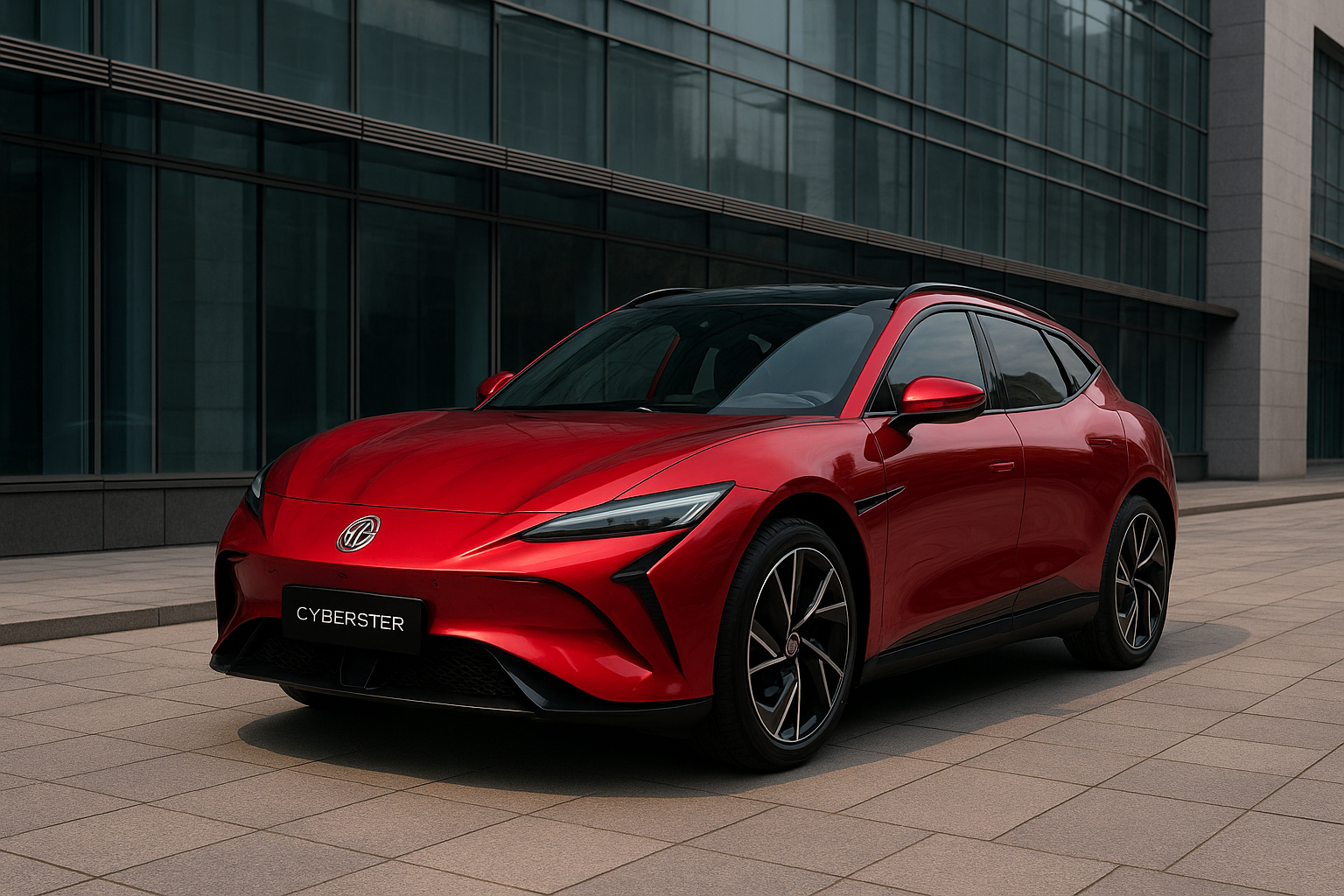
A Bold Step Into India’s Luxury EV Market
So, MG is about to bring out something pretty cool — the Cyberster, a premium electric SUV, expected to launch around July 2025. It’s their way of stepping up in India’s electric vehicle game and offering something that’s not just green, but also stylish and packed with tech.
EVs are getting popular here, and MG wants to be part of that wave, especially for folks who want a good-looking, comfy ride that’s loaded with modern features.
Striking Design Meets Cutting-Edge Technology
We don’t have all the info yet, but the Cyberster looks sharp. Think sleek and sporty, something that’ll catch eyes on the road.
Inside, expect lots of screens, smart features, and safety tech — basically, everything you’d want to make your drive smooth and fun. Whether it’s a quick city run or a weekend escape, this car’s aiming to make every trip enjoyable.
Performance That Packs a Punch
If you’re paying for a premium electric SUV, you want it to perform, right? While details are still under wraps, MG usually doesn’t disappoint. Expect a good driving range and enough power to make driving fun.
And with fast charging, you won’t be stuck waiting around forever — a big plus for busy folks.
What the Cyberster Means for Indian Consumers
This car means more choice for buyers who want a premium EV. The market is heating up, and it’s great because it gives you options that fit your style and budget.
MG is known for giving good value, so this might be a premium ride without the crazy premium price tag.
Growing Competition: A Win for Buyers
More companies entering the EV space means the competition’s getting fierce — Tata, Mahindra, Hyundai, and now MG all want your attention.
That means better cars, better prices, and more charging stations popping up, making EVs easier to own.
MG’s Vision for India’s EV Future
The Cyberster is just the start for MG. They’re clearly aiming to be a big player in India’s EV scene by giving buyers stylish, tech-packed cars.
As India moves toward greener transport, cars like this will help make electric vehicles the new normal.
Article By
Sourabh Gupta
Blog
India’s EV Market Heats: More Players, More Competition
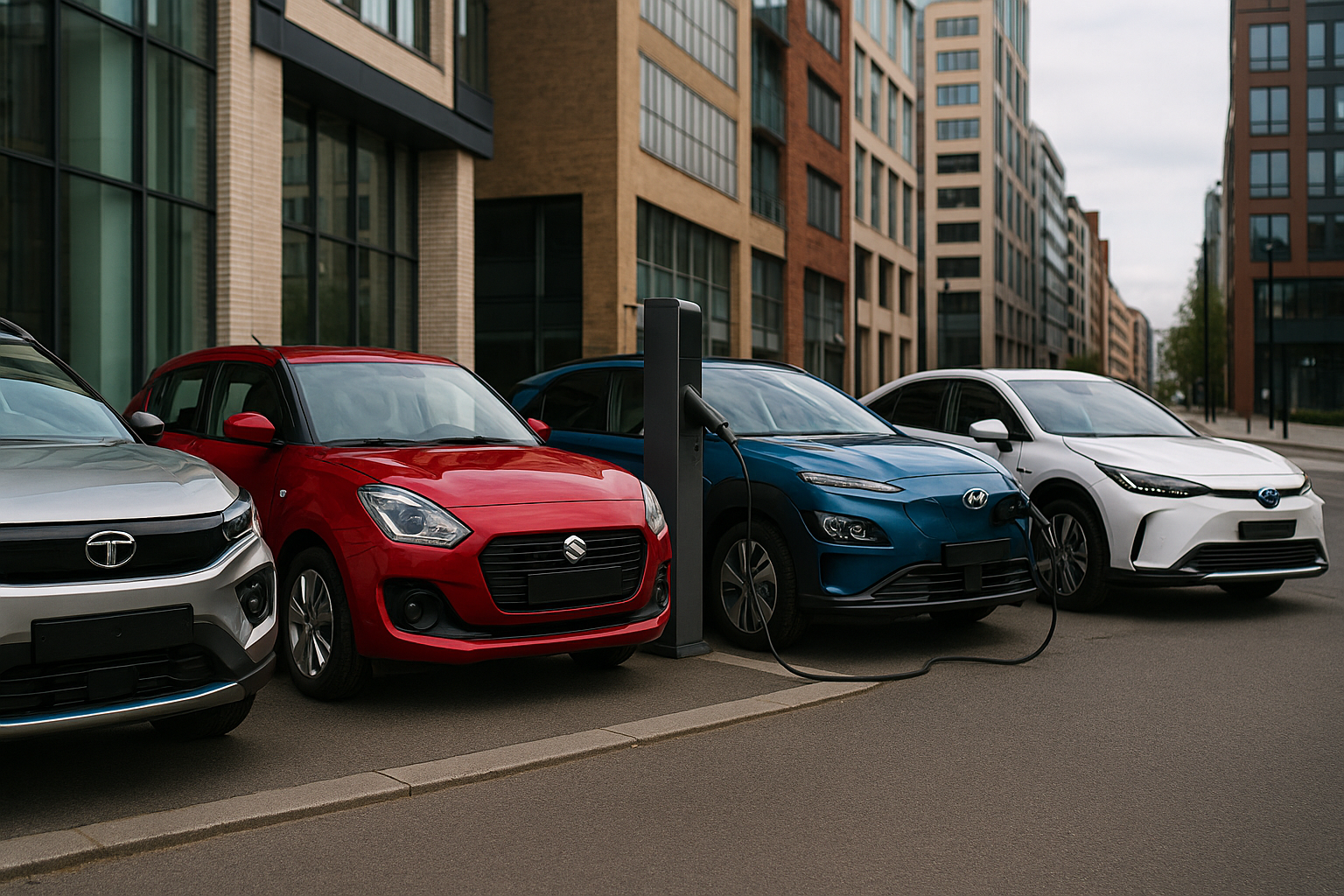
The Electric Vehicle Battle Is Just Getting Started
You know how things are changing fast with electric vehicles here in India? Well, it’s no longer just a couple of companies in the game. Tata and Mahindra have been leading for a while, but now Maruti, Toyota, and Hyundai are jumping in too. It’s turning into a proper race, and that’s great news for anyone thinking about buying an EV.
More players mean more choices, and when companies compete, it usually means better deals and cooler cars for us.
New Entrants Bring Fresh Energy
Maruti Suzuki is like the go-to brand for most Indian families because their cars are affordable and reliable. Now, if they start selling EVs, it’s going to make electric vehicles a lot more reachable for everyday folks.
Then you have Toyota and Hyundai, which have been working on electric cars globally for years. They’re bringing that know-how to India, which means better technology and cars designed to handle our roads and conditions.
This fresh blood is going to push everyone to do better, which is a win for all of us.
What This Means for Consumers
For buyers, this is the best time to consider an EV. You’ll get a wider choice of vehicles — from simple and affordable models to fancy ones packed with features.
Also, with so many companies competing, expect better batteries that last longer, faster charging times, and prices that won’t scare you away.
Charging stations will become more common, making it easier to own and use an EV without stress.
Challenges for Established Players
Tata and Mahindra have done well so far, but now the heat’s on. They’ll need to keep improving their cars and customer service to stay ahead.
More competition means prices might get friendlier, and cars will keep getting better, which is good news for everyone.
The Road Ahead: A Win for India’s Green Future
All this competition will speed up EV adoption, which means cleaner air and less pollution.
With more companies investing in EVs, we’ll see more charging points, better batteries, and more jobs related to green technology.
The future looks electric, and it’s shaping up to be an exciting ride.
Article By
Sourabh Gupta
Blog
Tata Motors Sets Sights on Dominating 50% of India’s EV Market
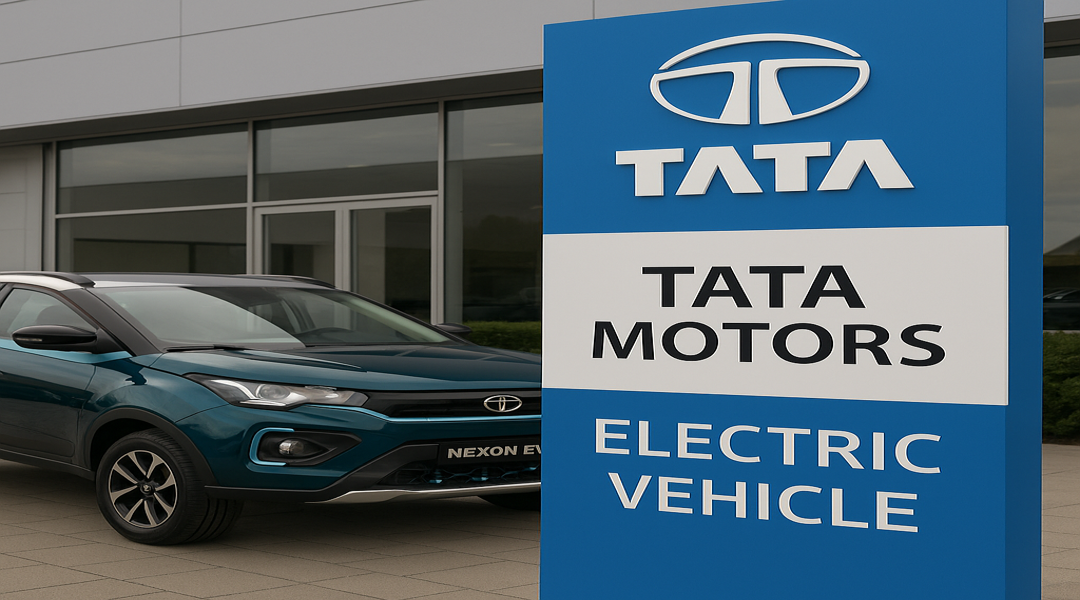
A Bold Ambition in a Growing Industry
Tata Motors isn’t just aiming to be in the EV race — they want to lead it. A recent ET Auto report says Tata wants to grab half of India’s electric vehicle market, which is a pretty big deal.
India’s EV scene is growing fast. More people are thinking about electric cars because petrol prices keep climbing, and folks want cleaner air. With all this happening, Tata’s shooting for the top spot, wanting to hold a massive share of the market.
Where Tata Motors Stands Today
Right now, Tata is the go-to name when it comes to EVs in India. The Nexon EV is one of the best-selling electric SUVs in the country. They’ve also got other models like the Tiago EV and Tigor EV that cover different budgets and needs.
But Tata knows it can’t just sit back and relax. Other brands like Mahindra, MG, and Hyundai are also pushing hard. Tata’s got to keep coming up with new stuff and get better if they want to stay ahead.
How Tata Plans to Achieve Its 50% Goal
So, how do they plan to take over half the market? They’ve got a few things lined up:
Expanding Its EV Lineup
Tata’s working on some cool new electric cars like the Harrier EV, Curvv EV, and the fancy Avinya. These options will give customers more choices, whether they prefer something small and practical or large and luxurious.
Building More Charging Stations
One of the biggest worries about EVs is charging. Tata’s working with Tata Power to set up more chargers across cities and towns. The easier it is to charge, the more people will want to buy EVs.
Making Batteries in India
Batteries are the priciest part of EVs, and importing them adds to the cost. Tata wants to make batteries right here in India, which should help bring prices down.
Going After Fleets and Government Buyers
Tata’s not just focusing on people buying cars for themselves. They’re also selling EVs to taxis, delivery companies, and government fleets. That’s a smart move because these buyers buy in bulk.
Challenges Ahead
It won’t be a smooth ride, though. Tata still has some bumps to cross:
- Battery supply might not always keep up with demand.
- Other companies are catching up fast.
- Not all towns have enough charging points yet.
- Convincing people outside cities to switch to EVs takes time.
The Road Ahead
Tata wants to own half of India’s EV market, and while that’s a huge goal, they have the right plan and the brand to pull it off. For buyers, this means better cars and more choices soon. For India, it’s a cleaner, greener future.
Article By
Sourabh Gupta
-

 Blog6 months ago
Blog6 months agoIndia’s Electric Vehicle Market Forecast to 2028 A Rapidly Growing Industry
-

 Blog12 months ago
Blog12 months agoTop 10 Electric Vehicles of 2024: A Comprehensive Guide
-

 Blog1 year ago
Blog1 year agoImpact of Electric Vehicles on the Environment and Pollution
-

 Blog1 year ago
Blog1 year agoTop 5 best electric vehicles Under $30,000: Affordable Choices for 2024
-

 EV news6 months ago
EV news6 months ago2025 Might Be the Time of EVs in India, Drove by SUV Dispatches
-

 EV news9 months ago
EV news9 months agoOla Electric Offers Massive Festive Discounts on Scooters Starting at ₹50,000
-

 Blog6 months ago
Blog6 months agoMahindra BE 6 An Intense Move toward the Fate of Electric Versatility
-
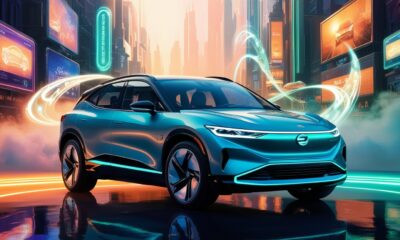
 Blog1 year ago
Blog1 year agoEV Charging Technology: Leading the Electric Vehicle Innovations in 2024




